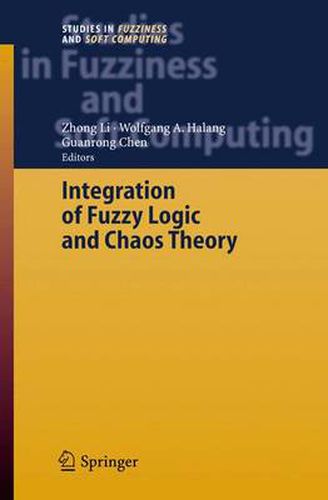Readings Newsletter
Become a Readings Member to make your shopping experience even easier.
Sign in or sign up for free!
You’re not far away from qualifying for FREE standard shipping within Australia
You’ve qualified for FREE standard shipping within Australia
The cart is loading…






This title is printed to order. This book may have been self-published. If so, we cannot guarantee the quality of the content. In the main most books will have gone through the editing process however some may not. We therefore suggest that you be aware of this before ordering this book. If in doubt check either the author or publisher’s details as we are unable to accept any returns unless they are faulty. Please contact us if you have any questions.
The 1960s were perhaps a decade of confusion, when scientists faced d- culties in dealing with imprecise information and complex dynamics. A new set theory and then an in?nite-valued logic of Lot? A. Zadeh were so c- fusing that they were called fuzzy set theory and fuzzy logic; a deterministic system found by E. N. Lorenz to have random behaviours was so unusual that it was lately named a chaotic system. Just like irrational and imaginary numbers, negative energy, anti-matter, etc., fuzzy logic and chaos were gr- ually and eventually accepted by many, if not all, scientists and engineers as fundamental concepts, theories, as well as technologies. In particular, fuzzy systems technology has achieved its maturity with widespread applications in many industrial, commercial, and technical ?elds, ranging from control, automation, and arti?cial intelligence to image/signal processing,patternrecognition,andelectroniccommerce.Chaos,ontheother hand,wasconsideredoneofthethreemonumentaldiscoveriesofthetwentieth century together with the theory of relativity and quantum mechanics. As a very special nonlinear dynamical phenomenon, chaos has reached its current outstanding status from being merely a scienti?c curiosity in the mid-1960s to an applicable technology in the late 1990s. Finding the intrinsic relation between fuzzy logic and chaos theory is certainlyofsigni?cantinterestandofpotentialimportance.Thepast20years have indeed witnessed some serious explorations of the interactions between fuzzylogicandchaostheory,leadingtosuchresearchtopicsasfuzzymodeling of chaotic systems using Takagi-Sugeno models, linguistic descriptions of chaotic systems, fuzzy control of chaos, and a combination of fuzzy control technology and chaos theory for various engineering practices.
$9.00 standard shipping within Australia
FREE standard shipping within Australia for orders over $100.00
Express & International shipping calculated at checkout
This title is printed to order. This book may have been self-published. If so, we cannot guarantee the quality of the content. In the main most books will have gone through the editing process however some may not. We therefore suggest that you be aware of this before ordering this book. If in doubt check either the author or publisher’s details as we are unable to accept any returns unless they are faulty. Please contact us if you have any questions.
The 1960s were perhaps a decade of confusion, when scientists faced d- culties in dealing with imprecise information and complex dynamics. A new set theory and then an in?nite-valued logic of Lot? A. Zadeh were so c- fusing that they were called fuzzy set theory and fuzzy logic; a deterministic system found by E. N. Lorenz to have random behaviours was so unusual that it was lately named a chaotic system. Just like irrational and imaginary numbers, negative energy, anti-matter, etc., fuzzy logic and chaos were gr- ually and eventually accepted by many, if not all, scientists and engineers as fundamental concepts, theories, as well as technologies. In particular, fuzzy systems technology has achieved its maturity with widespread applications in many industrial, commercial, and technical ?elds, ranging from control, automation, and arti?cial intelligence to image/signal processing,patternrecognition,andelectroniccommerce.Chaos,ontheother hand,wasconsideredoneofthethreemonumentaldiscoveriesofthetwentieth century together with the theory of relativity and quantum mechanics. As a very special nonlinear dynamical phenomenon, chaos has reached its current outstanding status from being merely a scienti?c curiosity in the mid-1960s to an applicable technology in the late 1990s. Finding the intrinsic relation between fuzzy logic and chaos theory is certainlyofsigni?cantinterestandofpotentialimportance.Thepast20years have indeed witnessed some serious explorations of the interactions between fuzzylogicandchaostheory,leadingtosuchresearchtopicsasfuzzymodeling of chaotic systems using Takagi-Sugeno models, linguistic descriptions of chaotic systems, fuzzy control of chaos, and a combination of fuzzy control technology and chaos theory for various engineering practices.